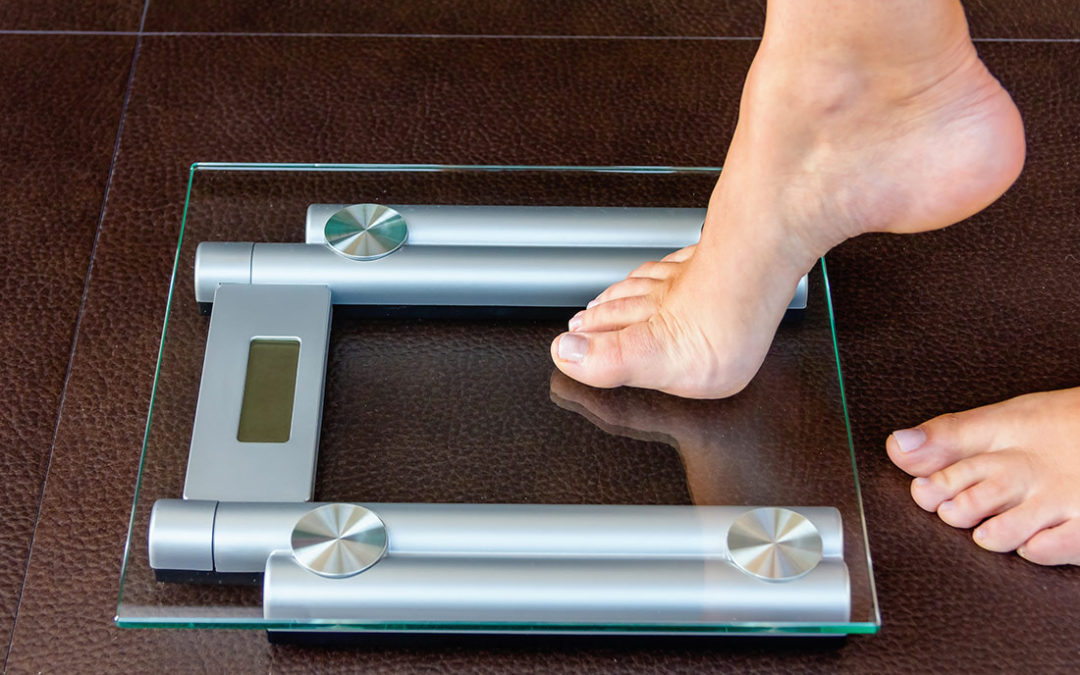Are you frustrated? Frustrated because you do everything “right” yet fail to discard those annoying pounds of fat?
If so, don’t throw in the towel! The reason is that you make one (or more) of the six fat loss blunders outlined below.
Fix them and you’ll be back on track to shaping a lean and impressive body – one that makes you proud when you look in the mirror. Let’s do this!
Mistake 1: Your Numbers Are Off
There is one thing that ultimately determines changes to the number on your scale: energy balance.
If you consume more calories than you burn, you will gain weight. If you consume fewer calories than you burn, you will lose weight.
Therefore, your first and most crucial step to a slim figure is making sure you’re in a negative energy balance. If you fail to do this, you will never reach your fat loss goals.
Unfortunately, people are terrible at estimating their calorie intake. Almost all of us consume more calories than we think we do. That’s why you must track your calorie intake.
Those who count calories lose more weight and fat than those who don’t. One review found that weight loss programs that use calorie counting lead on average to 7 pounds (3.3 kg) more weight loss.
What’s more, one study established that subjects who tracked everything they ate lost twice as much weight as those who monitored their food intake less often. Those who didn’t measure their food intake even gained weight.
Here’s What to Do:
If you want to lose fat, eat 200 to 300 calories below maintenance level.
So, let’s say your daily output is 2,500 calories, then consume 2,200 to 2,300 calories per day.
There are apps available to make tracking your calorie intake easier. Two good options are Cron-o-meter and MyFitnessPal.
Mistake 2: You Don’t Eat Enough Protein
If you don’t consume enough protein, you’re shooting yourself in the foot. Getting enough of it is the easiest (and tastiest) way to boost your fat loss efforts.
Why? Because your food reward system has a strong appetite for protein. Protein is so satiating that when people increase their intake, they automatically consume fewer calories.
One study increased the protein consumption of their subjects from 15% to 30% of their daily calorie intake. As a result, they consumed, on average, 441 fewer calories per day. This led to an average weight loss of 11 pounds in just 12 weeks!
The reason protein is so satiating is because it raises the satiety hormones GLP-1, cholecystokinin, and Peptide YY, while reducing the hunger hormone ghrelin.
It is thus easier to maintain a calorie deficit on a high-protein diet.
Besides, consuming enough protein helps prevent muscle loss on a diet. This is great not only for your sex appeal, but also for your metabolic rate, because the more muscle you carry, the more calories you burn per day.
Here’s What to Do:
Get between 1.8 and 2.7 grams of protein per kilogram of body weight to preserve muscle mass and curb hunger.
So, if you’re 75 kilos, get between 135 and 203 grams of protein per day. This equals 540 to 812 calories obtained daily from protein.
Mistake 3: You Eat the Wrong Foods
As we have already seen, calorie balance determines whether you’ll gain or lose weight. However, this doesn’t mean that food quality is irrelevant.
A hundred calories from grass-fed beef have a different effect on your body than the same number of calories from trans fat-loaded fries from McDonald’s.
This holds true not only from a health perspective but also with regard to your body shape. Why? Because certain foods are more satiating than others, which means that eating them will make it easier to maintain a calorie deficit.
Here’s an example: a croissant contains five times as many calories as boiled potatoes, but boiled potatoes are found to be seven times as satiating. So you’ll feel more satiated if you eat potatoes rather than croissants, and thus it will be easier to stay on track with your diet.
Here’s What to Do:
Get at least 80% of your sustenance from nutritious, whole foods such as fruit, vegetables, (lean) meat, fish, eggs, and potatoes.
Fruit and vegetables in particular should be a staple in your diet. Due to their high water and fibre content, they are very satiating for the low number of calories they provide.
Mistake 4: You Don’t Sleep Well
In our hectic world, sleep is often neglected. While getting enough of it can be hard at times, sleep deprivation has enormous consequences, not only for your mental state but also your physical condition.
One meta-analysis found that adults with poor sleep are 55% more likely to become obese. And in children, poor sleep raises the risk of obesity by a staggering 89%.
How come poor sleep causes weight gain? It’s mainly because sleep deprivation increases food consumption.
Just one hour less of sleep than usual can raise food consumption by as much as 45%.
The reason for this is that sleep deprivation changes your brain chemistry. It lowers satiating hormones such as leptin while raising the hunger hormone ghrelin.
Here’s What to Do:
Get between 7 and 9 hours of high-quality sleep. (Some individuals need even more.)
Here are a few tips to increase your sleep quality: make sure your room is pitch-dark, avoid caffeine after 2 pm, keep a fixed sleeping schedule, and supplement with magnesium.
Mistake 5: You’re Not Lifting Weights
If you inquire about the best exercise for fat loss, most people will respond with suggestions such as running, cycling, and swimming.
While cardio can be beneficial, strength training is much more powerful for achieving your ideal body shape. There are many reasons why, but here are two compelling ones.
First off, weight training prevents muscle loss. (You might even gain muscle.)
This is crucial because even though a calorie deficit is all that’s needed to lose weight, it doesn’t reveal where this weight comes from.
By following a sound weight training plan, you’ll ensure most of the weight comes from fat mass, not muscle tissue. This is key for shaping an attractive body.
Second, weight training raises your metabolic rate. While the number of calories you burn during a weight training workout is low – an average of only 200 to 300 calories per hour – strength training increases your metabolic rate for hours after your session.
One study measured how metabolic rate was affected by a high-intensity strength training routine to failure with short rest periods between sets.
The results? The day after the workout, the subjects had a 24% higher metabolic rate. This raised their energy expenditure from an average of 1,909 to 2,362 calories over a 22-hour period.
That’s an extra 452 extra calories, the same amount most people burn by running for one hour straight.
Here’s What to Do:
Start doing a strength training routine if you aren’t already.
Focus mainly on big, compound exercises such as squats, deadlifts, lunges, presses, rows, and weighted carries.
Perform most of your exercises in the moderate rep range (6 to 12 reps) and keep moderate rest periods (60 to 180 seconds) between sets.
Mistake 6: You Overdo Refeeds
Refeeds, often called “cheat meals”, are a meal or time frame in which you spike your calorie intake above what you usually consume.
Let’s say your regular calorie intake is 2,400 per day. On a refeed, it can be something like 3,000 calories.
This temporarily spike has both physical and physiological benefits that make it easier to reach your fat loss goals.
For example, refeeds increase leptin levels, which naturally decrease when you slash your calorie intake.
With leptin levels going higher, appetite and cravings decrease while motivation and libido rise.
Besides, refeeds provide a temporary break from your diet, making it easier to stay on track in the long term.
What’s more, refeeds can undo some of the dieting-induced drop in metabolic rate. Great, because if you stay in a calorie deficit for a while, your body will lower your metabolic rate to preserve energy.
However, avoid the common mistake of treating refeeds as an excuse to devour all the food that crosses your path.
If you go overboard with your calorie intake on your refeeds, you’ll undo all your hard work of the past days or even weeks.
Here’s What to Do:
If you’re a male with above 15% body fat or a female with above 23% body fat, refeed once every 14 days.
If you’re a male with a body fat percentage below 15% or a female with below 23% body fat, refeed once every seven days.
During your refeed day, consume 30% more calories than your regular daily target. So, if your usual intake is 2,000 calories per day, get 2,600 calories on your refeed.
It’s up to you whether you spread those extra calories throughout the day or eat them all in one meal.
During the rest of the week, be strict with hitting your regular daily calorie target!
Results Guaranteed
Package 1: Unlimited Classes Per Month
Package 2 : 3 Classes Per Week
Package 3: 10 Classes 3 Months
Paul Stewart is widely regarded as one of Ireland’s best strength and conditioning specialists. Paul began his fitness career in New York with a B.SC Degree from Adelphi University, and since then has fulfilled his early promise with an array of certs and accolades, including a Masters Degree in Education.
As Pureclass Director, Paul is responsible for overseeing all departments related to fitness and training programmes. Paul is the ultimate overachiever, whether he is leading a group class as a Spinning Instructor or reaching out to his colleagues, Paul combines gritty intensity with the ability to bring different personalities together for a single purpose.
With over 15 years in the fitness industry, Paul’s enthusiasm for fitness and gift for creating quality programs is the cornerstone of Pureclass Fitness Studios success.









